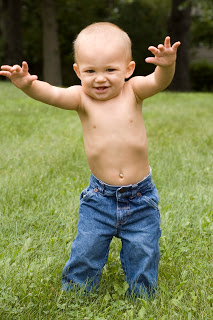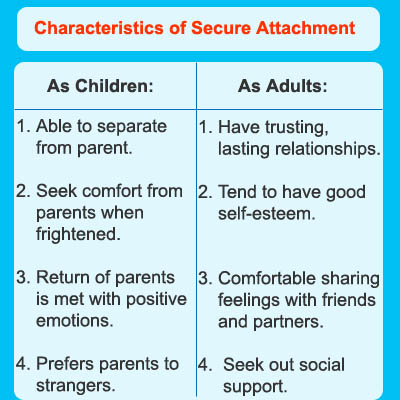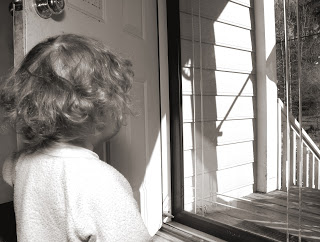I remember feeling instantly protective of my son E. when he was born. We were a symbiotic unit during those early days. I was reticent to hand him over and he was reticent to be put down. I will, however, be forever grateful for every time his father offered me a much-needed reprieve and walked those endless blocks in the middle of the night to help E. fall asleep.
During the first three months of his life, like most other mother-infant (or primary caregiver-infant) pairs, we were tuning ourselves into each other’s verbal and non-verbal cues and especially our feelings. Best known in attachment theory literature as attunement. E.’s signals of distress, crying, grimacing, stiffening of his muscles, clenching his fists, or arching of his back, were often associated with tiredness, hunger, and especially with E., proximity-seeking. By six or nine months an infant’s primary attachment(s) are well-established and secure—as was ours.
During the course of our first three years together, we began the first of our most important courage challenges: to learn how to say goodbye whilst ensuring psychoneurobiological homeostasis (which is fancy talk for “not melting down during every little separation!”)
As a new mom and trained child/family therapist, I was aware how adaptive E.’s startle response and protests against separation were for his survival. As a student of psychology, I remembered that most child development research shows that it isn’t until seven to ten months that infants begin to show fear and stranger anxiety. It takes that many months for this more complex defensive or inhibitive behavior to develop in the autonomic nervous system due to the maturational time-line of the brain’s cingulate cortex (the area of the brain which is primarily involved via the limbic system with emotion formation and processing, learning and memory).
I was careful to listen to E.’s need for mama-time. I also continually, gently, encouraged his time to bond, during those first seven months, in the arms of other loved ones—those aunties, uncles, siblings, grandparents, close friends, and eventual babysitters who would become the important secondary attachments in his life. In those instances, I handed over E. with confidence and trust in his other caregivers whilst also paying close attention to his reactions. We taught each other a great deal about interpersonal trust and emotional and social courage during those early days of building family connections.
Though exhausted new parents, we continually held E., and walked, sang to, read to, fed on demand not always on schedule, and didn’t let him cry himself to sleep (though we tried a few times with heart-breaking results instead of the success and sleep other friends enjoyed). We practiced the 7 Baby B’s of Bonding. We weren’t coddling or spoiling him, we were teaching him to feel safe in the world. We were calming his nervous system so his neurons could wire and fire in the direction of survival and maintain or restore homeostatic and emotional balance—whatever the case may be.
Despite what some of the baby books said about letting him ‘cry it out’, I paid close attention to what his cries conveyed to me and made sure he knew I was both sensitive and responsive to those specific cries. In that sense, I was teaching him that his voice mattered, that he was safe, that I was his secure base, and with those assurances he could learn to separate and be well in another’s arms.
We were privileged to be able to have this time with our infant son, and careful to live simply so that we could afford to support this critical period of his development. We also got some good advice early: it’s not stuff that your child needs, it’s YOU!
We often said to one another, my husband and I, “These early years with our kids are not our money-saving years.” We didn’t have fancy new strollers or cars, we sacrificed some career-advancing opportunities in favor of time at home with our kids, and our savings account dwindled. But, it turns out we were wrong: they were our money-saving years! The investment of time, patience, love, and attuned attention for our children turns out to be priceless in terms of ensuring their physical, cognitive, social, and emotional well-being. The costs are astronomical when we don’t ensure our children’s well-being and thus their capacity for courage.
These days when economics require that most of us are dual-income families (my family included), taking the time to support a new caregiver’s relationship with your young child, pacing their introduction, tag-teaming with trust, is vital to the attachment process a child needs to transfer attention and then affection from parent to a new caregiver. Here’s some helpful advice about introducing a new caregiver.
Little did I know then, that those first three years together lay the foundation for how my son and I now adapt and listen to one another, let go of one another, and relax trusting in our return to the safety and security available in our relationship. Bigger separations were to come: my return to work, starting preschool and then kindergarten.
E’s separation protests were strong at times. The first day of preschool, he screamed at the top of his lungs to make sure that his new teacher, all the other new parents and myself knew all about his separation anxiety, “If you leave me here, I’m going to be not okay and someone is going to have to call Dr. X (our family doctor)!” It took everything I had to leave him. Before I did, I leaned down to meet his eyes and hold his precious little hands in mine (removing them from around my neck), and said reassuringly “I know it is a big change to come here. That’s why we’ve practiced a few times and now I know you are ready. You need to know I would never leave you with anyone or in any place that I didn’t think was safe and good for you.” Then, I walked away with tears in my eyes remembering how much courage it took me to leave my own mom on my first day of school. I was filled with compassion for my son. Somehow I knew, though, that I had to be the strong one in that moment and bid my good-bye. I had to believe in him first, before he experienced the confidence boost that is associated with being brave enough to try something new, something scary, something that you have to do all on your own!

I now live with a confident, funny, loving thirteen year-old who has no trouble forming friendships, reaching out to his relatives, trying new things which require getting outside his comfort zone, completing his homework and guitar practice without being reminded, letting me know when he’s not feeling well or just needs some space, even changing schools and countries. E. is not prone to fear or anxiety—instead he is the prototypical surfer dude who rides life’s waves with joy and ease. This adolescent is the same infant who hardly ever wanted to be put down during the first nine months of his life, until he stood up one day in his ninth month and walked, then ran, across the living room collapsing into our laps. And these days, without fail, every morning he leaves the house to catch the school bus, the last words I hear him confidently call out are “Bye, Mom!” He waits for my response, “Bye, Love!” Then, he closes the front door and he’s off on his own journey. In that moment, I sigh with the subtle heart pangs of another good-bye, trusting in his strength and mustering the courage to love and let go.

Sources:
Warren, S., Huston, L., Egeland, B., & Sroufe, A. (1997). Child and adolescent anxiety

